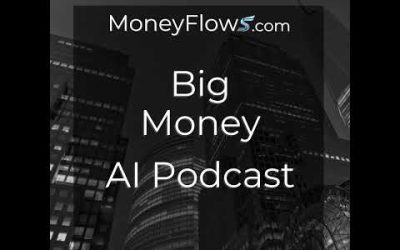by Gary Alexander
October 21, 2025
Most friends of mine with any interest in the stock market called or wrote to me last week about my reaction to Andrew Ross Sorkin’s segment on 60- Minutes promoting his new book: “1929: Inside the Greatest Crash in Wall Street History – And How it Shattered a Nation,” so, when the book was released a week ago, on October 14, 2025, I downloaded a copy and have now finished reading it – just to make sure that all the bizarre things Sorkin has been saying were not a part of this otherwise fine history book. (His profiles of speculators Jesse Livermore and Citibank then-CEO Charles Mitchell were especially good).
Sorkin’s book is a wonderful addition to literature about the 1929 crash, focusing on the elite personnel on Wall Street who contributed most to the mania and crash, but…nowhere does Sorkin’s book link the 1929 Crash to the Great Depression or expound on the possible comparisons between 1929 and today.
The media loves to scare us all with warnings of imminent doom, but there is no firm link between President Hoover’s 1929 bubble and President Trump’s 2025 economic policies. A history book is boring to the media, so they focus on their real and imagined fantasies of “another 1929” and Great Depression.
This subject is something of a hobby to me. I wrote an extensive study of the 1929 crash back in 1970, and I also tried my hand in writing a book on the “coming crash” (of 1989), published in mid-1987, so before getting into Sorkin’s book, let me summarize my two past research efforts into market crashes.
First, in 1969 and 1970, I read all the existing books on the 1929 crash and Great Depression to craft an article for a national magazine, called “The Great Depression: Can it Happen Again?” In it, I listed all the similarities between 1929 and 1969. I was a bit late (and also early), since the 1968-70 bear market ended in June 1970, but I correctly predicted that the coming crash would be more inflationary than deflationary.
In my December 1970 article on the Great Depression, I predicted that the Fed would make the opposite mistake they made in the 1930s. Instead of slashing U.S. money supply, as they did from 1930 to 1933, I predicted that the Fed would print too much money: “Like generals who study to win the previous war, not the coming war — economists have studied diligently to prevent ‘1929.’ But the future financial crisis might not be stock-market oriented, but inflation oriented (like the German inflation of 1923, when bank accounts and pensions were wiped out by inflation, and billions of marks couldn’t buy ‘two cents’ worth’ of goods … Today’s world economic situation is much different from that in 1930. Presently, inflation, not depression, reigns. If a crisis strikes in the 1970s, it will probably be an ‘inflationary depression.’”
My forecast came true, as the 1970s were dominated by inflation, making returns worse than the 1930s.
Graphs are for illustrative and discussion purposes only. Please read important disclosures at the end of this commentary.
In early 1987, I wrote a full-length book titled: “How You Can Profit from the Panic of 1989,” sub-titled, “An amazing convergence of economic cycles in 1988-89 could cause the biggest panic since 1939, perhaps the worst ever. Here’s how to protect yourself and prosper.” This 154-page report debuted at our company’s Mid-Year Strategy Investment Conference, held on June 3, 1987, in Naples, Florida. The “convergence report” (as we called it in-house) covered threats from Kondratieff Waves, climate change, political cycles, inflation, deficits, troubled banks, third world loans, debt explosion, a farm crisis, a trade war, a dying dollar, trouble in oil-rich hot spots, terrorism, the AIDS Epidemic, and Cold War trends.
Alas, my “coming crash” book was mass-marketed during the crash of 1987, so the book didn’t generate much in sales. In fact, as it turned out, the market returned to its mid-1987 high by 1989, the year I targeted for the crash, but…that didn’t stop many others from writing books about a coming 1990s crash! It did, however, cause me to stop writing such nonsense, as a “recovering Apocaholic” and perma-bull.
The first two-books (above) were the best of a dozen or more books I read in 1969 to prepare for my first “crash” study. John Galbraith’s book made him so much money that he once confided to a mutual friend that he put the profits from this 1955 book into the stock market, which made him independently wealthy.
Galbraith’s winning formula was “Sell the fear, buy the hope” or “Roar like a Bear; Charge like a Bull.”
Sorkin Stars on 60 Minutes (and Other Media)
Andrew Ross Sorkin said he took eight-years to research and write this book, so he was in his 40s, my age when I wrote my last “Coming Crash” book in 1987. I’ve wised up since then, and hopefully he will, too.
Sorkin was the focus of the middle 13-minute segment of 60-Minutes on Sunday, October 12, and then he appeared on the Today Show on October 14. For a media-savvy TV host, Sorkin seemed to be trapped into responding to the media’s focus on “Can 1929 happen again”? He took their bait instead of focusing on history, spilling a series of word salads unlike his better work in print and on TV. Here are a few:
On NBC’s show, he responded to the 1929 question by saying: “There are some 1929 ish – ish – things happening now.” He then told the story of his grandfather, an 11-year-old messenger boy on the floor of the stock exchange in 1929. His grandfather, as a boy, said he saw someone leap from a high building to his death on the street below. Sorkin said his grandfather was so scarred by that terrible crash that he never bought a share of stock in his 91 years. I’d say Sorkin should have encouraged his grandfather to buy stocks, as I encouraged my Depression-scarred parents to do, rather than shying away from any risk.
As it turned out, the Dow more than tripled from July 1932 to March 1937. Surely, Sorkin’s grandfather witnessed the 1933 Dow gains (+66.7%), then 1934 (+4.1%), 1935 (+38.5%) and 1936 (+24.8%), four calendar years in which the Dow tripled. In a deflation, the real gains expand, making this 4-year span (1933 to 1936) more lucrative than any other four-years in history. Also, dividends were much higher then. Sorkin should remind us of this “reversion to the mean” rather than promoting the paralysis of fear.
I watched the 60-Minutes segment twice to capture his key quotes, marveling at Sorkin wandering so far from the contents of his own book. At one point, he said, “I think it’s hard to say we’re not in a bubble of some sort. The question is always when is the bubble going to pop?” At another point, Sorkin said, “I’m anxious that we are at prices that may not feel sustainable. And what I don’t know is we are either living through some kind of remarkable boom and part of that’s artificial intelligence and technology, and all of that, or everything’s over-priced.” This 60 Minutes segment closed with Sorkin saying he’s “positive thereis a crash coming. It’s either a gold rush or a sugar rush, and we won’t know until for a couple of years.”
Wow – we’re in “either a gold rush or a sugar rush”! That’s a wide range of outcomes, but Sorkin tried to clarify this seeming ambivalence by saying: “It’s not that we’re going off a cliff tomorrow. It’s that there’s speculation in the market today, there’s an increasing amount of debt in the market today, and all of that’s happening against the backdrop of the guardrails coming off.” But there was 10-to-1 leverage in 1928-29 (not so today), and we have also a wide array of guardrails still in place that were unheard of in 1929.
Sorkin’s “1929” history sticks closely to that iconic year of 1929, along with a few follow-ups on the fate of the main characters, but he draws few if any conclusions on what caused the 12-year Depression. After all, the Panic of 1907 and market crash of 1920 led to no such long-term downdraft in the economy. More recently, the 1987 crash and 2008 Greater Recession fueled no decade-long (or even one-year) recession.
Did the 1929 crash cause a 12-year nightmare? NO, but I’m running long, so I’ll continue next week, on the 96th anniversary of Black Thursday, Black Tuesday and the blackest day, Monday, October 28, 1929.
The post 10-21-25: Book Review: Will “1929” Happen Again Soon? appeared first on Navellier.







